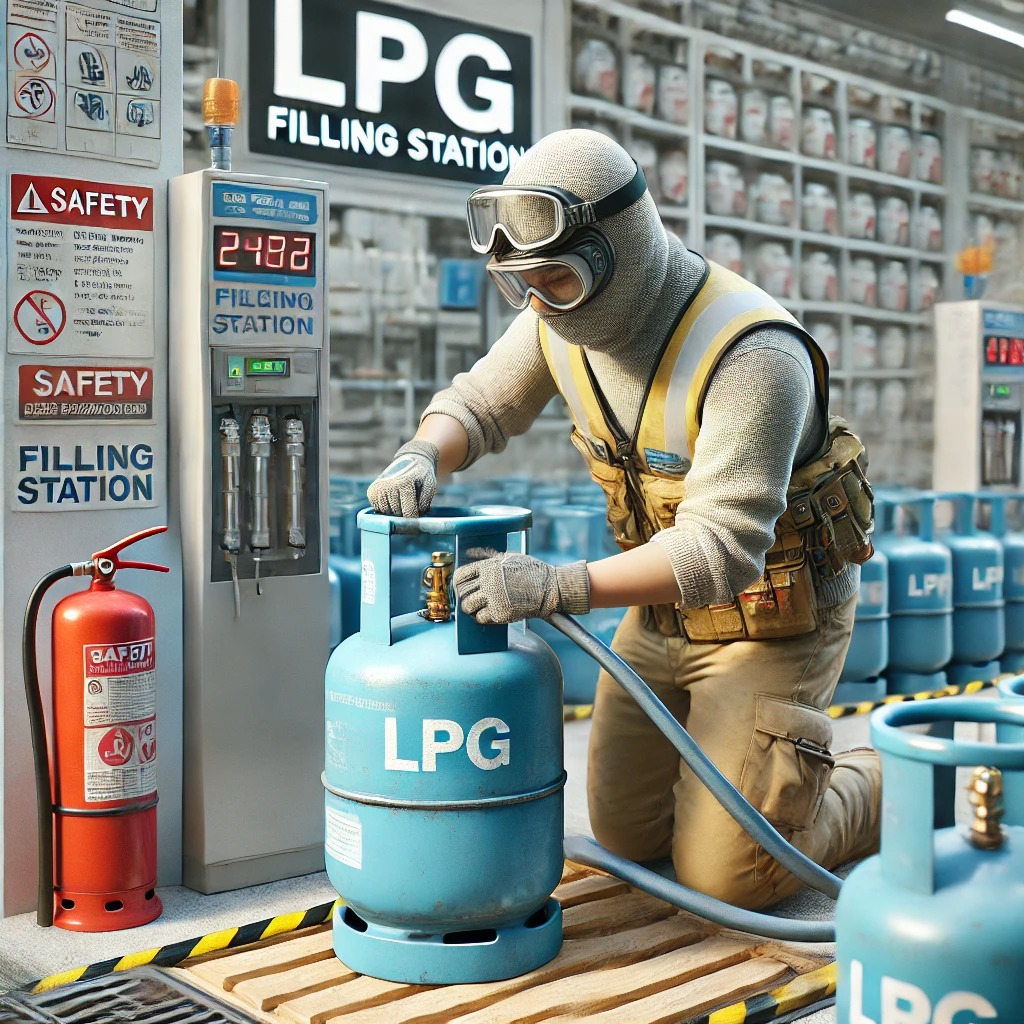Liquefied Petroleum Gas (LPG) is a useful and efficient fuel used in many households and industries for heating, cooking, and even powering vehicles. However, handling and filling LPG cylinders require careful attention and adherence to safety protocols to prevent accidents and ensure the well-being of everyone involved. Here, we will discuss essential safety tips for filling LPG cylinders and safe filling procedures to follow to ensure a secure environment.
Understanding LPG and Its Risks
LPG is a flammable hydrocarbon gas that becomes liquid when compressed. While it’s an efficient energy source, it poses significant risks if not handled correctly. The primary dangers associated with LPG include:
- Fire and Explosion: LPG is highly flammable and can cause fires or explosions if it leaks and comes into contact with a spark or open flame.
- Asphyxiation: In case of a leak, LPG can displace oxygen in the air, leading to suffocation.
- Cold Burns: LPG is stored at very low temperatures, and direct contact with the liquid can cause severe cold burns.
Essential Safety Tips When Filling LPG Cylinders
1. Use Approved Equipment
Always use equipment that is specifically designed and approved for LPG handling. This includes hoses, regulators, valves, and filling stations. Ensure that all equipment is regularly inspected and maintained to prevent leaks and malfunctions.
2. Check for Leaks
Before starting the filling process, inspect the cylinder and equipment for leaks. Use a soapy water solution to check for gas leaks around valves and connections. If bubbles form, it indicates a leak. Address any leaks before proceeding.
3. Wear Protective Gear
When filling LPG cylinders, wear appropriate protective gear, including gloves, safety goggles, and long-sleeved clothing. This helps protect against cold burns and exposure to gas.
4. Ensure Proper Ventilation
Fill LPG cylinders in an open area where air can flow freely. Avoid enclosed spaces as good ventilation helps to spread out any gas if there’s a leak.
5. Avoid Ignition Sources
Keep all sources of ignition, such as open flames, electrical switches, and smoking materials, away from the filling area. LPG is highly flammable, and even a small spark can cause a fire or explosion.
6. Follow Safe Filling Procedures
Adhering to safe filling procedures is crucial to preventing accidents. Here are the steps to follow:
Safe Filling Procedures
Preparation: Before filling, check that the cylinder is in good condition and not damaged. Inspect the filling equipment for any signs of wear or leaks.
Connection: Attach the filling hose securely to the cylinder valve. Make sure the connection is tight to prevent gas leaks.
Filling: Open the valve slowly to let gas flow into the cylinder. Watch the fill level closely to avoid overfilling. Most cylinders have a safety mechanism to prevent overfilling.
Disconnection: After filling, close the valve and carefully disconnect the filling hose. Check for leaks again using soapy water.
Storage: Store filled cylinders upright in a well-ventilated area away from sources of ignition. Make sure they are secured to prevent tipping.
7. Training and Awareness
Ensure that everyone involved in the filling process is adequately trained and aware of the safety procedures. Regular safety training sessions can help the importance of following protocols and staying vigilant.
8. Emergency Preparedness
Have an emergency plan in place in case of a gas leak or fire. Ensure that fire extinguishers, gas detectors, and first aid kits are readily available. Train employees on how to respond to emergencies and evacuate the area if necessary.
9. Regular Inspections
Conduct regular inspections of the filling station and equipment to identify and address potential hazards. Keep a maintenance log to track inspections, repairs, and replacements.
10. Report Incidents
Encourage the reporting of any safety incidents, near misses, or equipment malfunctions. Investigate these reports to understand the cause and implement measures to prevent future occurrences.
Filling LPG cylinders safely requires careful attention to detail and following the right procedures. By sticking to these safety tips and steps, you can greatly reduce the chance of accidents and keep everyone safe.
For more information on LPG safety, contact AJGas. We offer comprehensive training programs and services. Keeping everyone safe when handling LPG is not just about following rules—it’s a responsibility to your employees, customers, and community. Always make safety a priority.
For expert advice and reliable LPG services, contact AJGas today. Our team of professionals is ready to help with all your LPG needs and ensure you operate safely.



Comments are closed